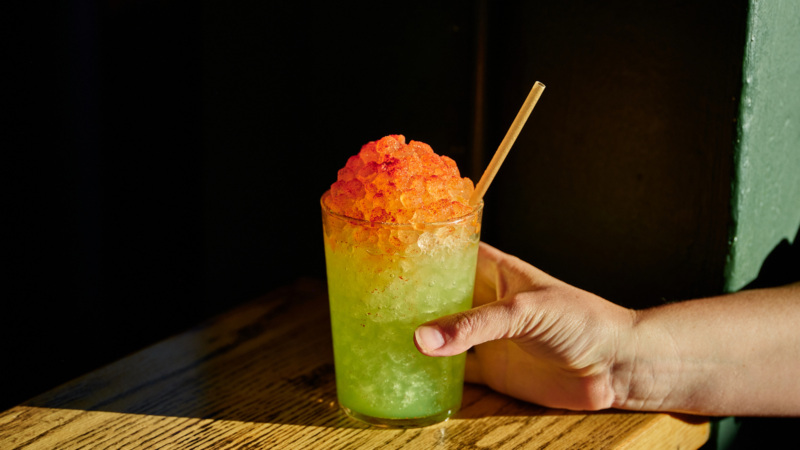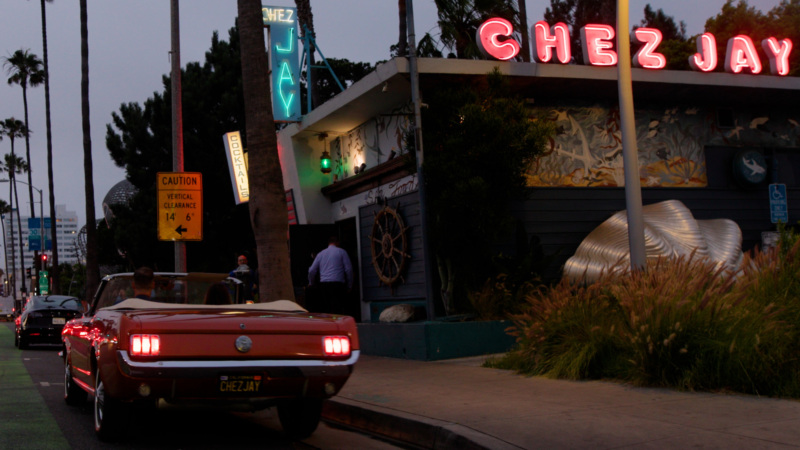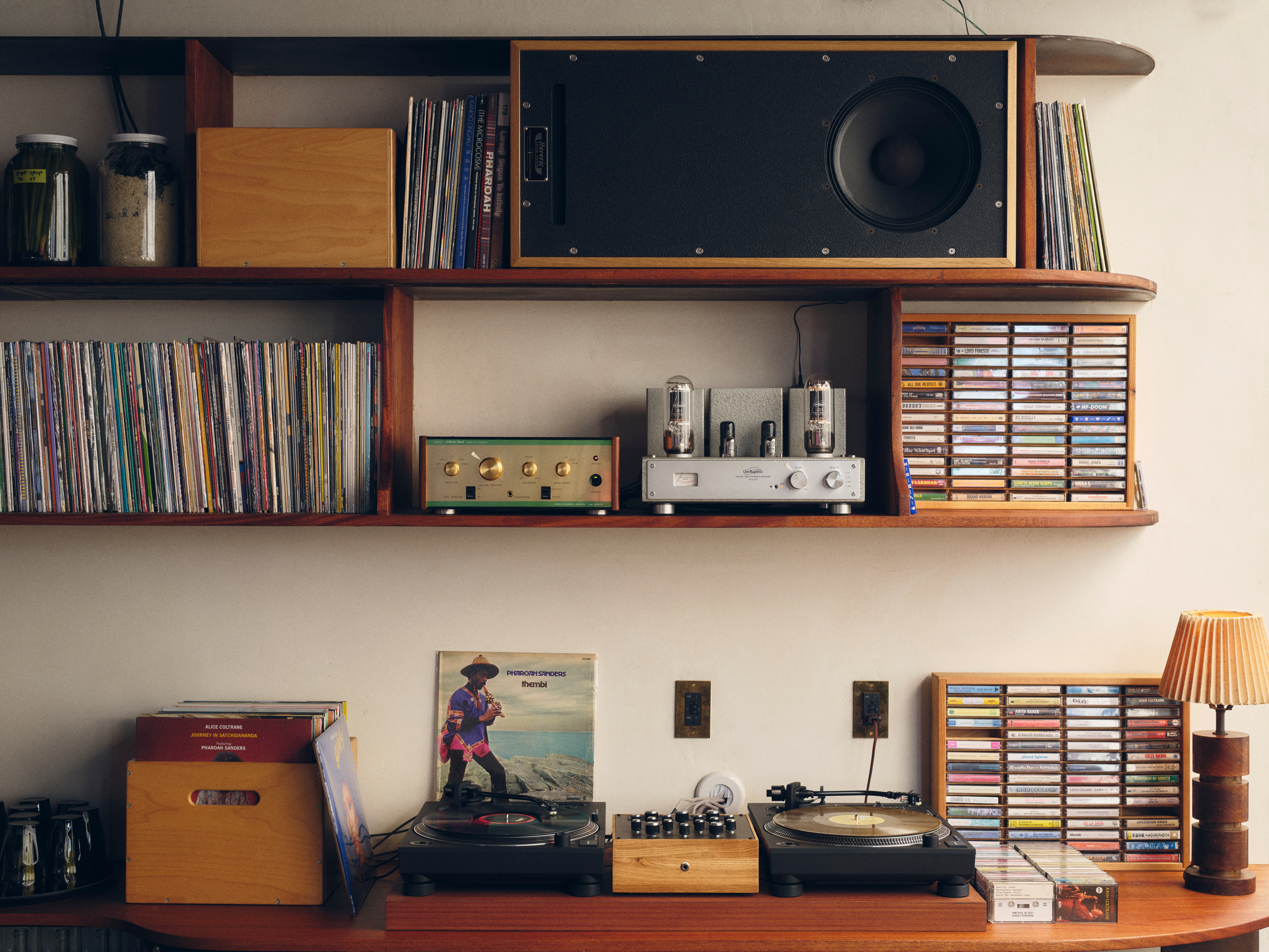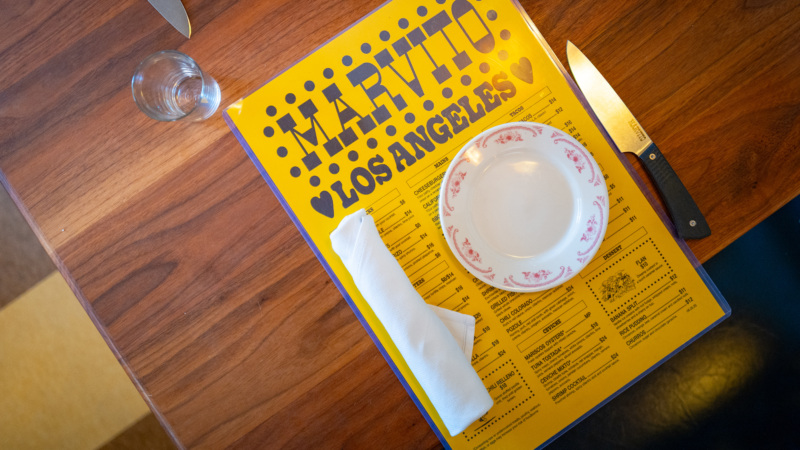
The Sisters Behind L.A.’s Coming of Age for Thai Food
Published:
Tuk Tuk Thai had been situated on Pico Boulevard, serving classic Thai dishes like pad see ew, barbecue chicken, and curries, for 23 years before owner Katy Noochlaor moved it to a new location in Sawtelle in March. With fresh digs in a vibrant, restaurant-filled neighborhood, she revamped Tuk Tuk in both food and design. It’s an evolution that reflects her own growth as the daughter of the legendary Chao Krung Thai restaurant owners, a family that’s been in the business for over 50 years and was one of the first trailblazers in the Thai restaurant scene in Los Angeles.
With her sister Amanda Maneesilasan by her side as the head chef, Noochlaor has updated Tuk Tuk’s menu with a focus toward more casual Thai street food: Think house-made and fermented Isaan sausages punched up with lemongrass and garlic, khao soi noodles in a curry coconut chicken broth, and crispy taro shreds served alongside a sweet chili sauce. Popular dishes such as pad Thai, pineapple fried rice, and tom yum soup still round out the menu.
It’s not the first time the sisters have breathed new life into their Thai restaurants. A few years ago, they took over Chao Krung, which opened in East Hollywood in 1969 before relocating to the Fairfax District, and gradually updated the new space into something uniquely their own, while staying true to their parents’ roots. And in 2016, Noochlaor partnered with Last Word Hospitality group to transform her nearly 20-year-old Rambutan Thai restaurant in Silver Lake into Same Same Thai, a hip wine bar paired with classic Thai dishes.
Over the years, the sisters have honed their focus to three main restaurants (at one point, their family operated seven), leaning into traditional Thai recipes and ingredients instead of fusion-type dishes, and managed to weather the pandemic and come out stronger. We spoke with Noochlaor and Maneesilasan about the secret to their success, how to transform a longstanding family business, and how Thai food has changed in L.A.
- How Salt’s Cure Became L.A.’s Quintessential Breakfast Joint
- At Anajak Thai, Riesling Is But the First Step to Wine Delight
- At the Heart of L.A., Harold & Belle’s Preserves a Legacy and Looks Ahead
- The Resy Guide to the Best Outdoor Dining in Los Angeles
- Why Marvin Is the Perfect Place (to Meet in the Middle)


What was it like when you first opened Tuk Tuk Thai?
Katy Noochlaor: I started Tuk Tuk Thai on Pico and Robertson in 1999, when I was 26 years old. I branched out from my parents’ Chao Krung Thai and wanted to open my own restaurant, put my own spin on it, and create my own menu and design.
It wasn’t my ideal location. It was my first restaurant and what I could afford. Previously, it was an Indian restaurant, so I approached it like, “Okay, it’s probably not that expensive because it’s already an existing restaurant.”
It was a very small restaurant in a small Jewish neighborhood that had a lot of kosher food. We were the standout gem for non-kosher people.
After being on Pico for 23 years, what made you finally move Tuk Tuk to Sawtelle?
Katy Noochlaor: We were forced to move. I was renting month-to-month during the pandemic, but when it came time to renegotiate the lease, our landlord shut us down. He sent us a termination letter that said we had to move out in three months. I wasn’t prepared to move that quickly. It’s hard to move a restaurant in three months. Right away, I started looking for a new location and I found the Sawtelle one within a month. I always wanted a new location for Tuk Tuk, but not like this.
What sort of changes did you make to Tuk Tuk to fit in its new Sawtelle neighborhood?
Katy Noochlaor: We wanted to design a place that fit in with the neighborhood, because Sawtelle is more of a vibrant area with many Asian restaurants. As the first Thai restaurant there, I wanted it to be stylish but casual. So, I focused not only on the menu, but also the design.
The idea was to combine street food with classic Thai dishes from our family’s recipes that Amanda recreated. Because Sawtelle already has a lot of diners to support Asian restaurants, we understood that we could take more risks with our menu. We were able to be more innovative and creative, and showcase what we really wanted our menu to be. These are dishes that our family loves. Everything on the menu is something we would order and eat ourselves.

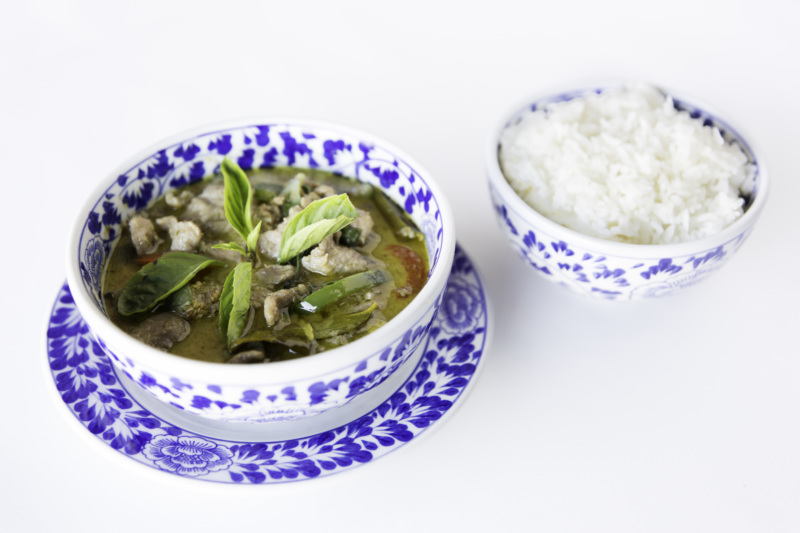
What dish stands out to you on a deeper level?
Amanda Maneesilasan: The green curry, because I learned how to make that when I was nine years old. At the time, I wasn’t allowed to play outside, so I was stuck in the kitchen with my grandma. She showed me that I have talents in cooking. I incorporated all of the recipes and ingredients [I learned from her] on our menu today. When my friends who are Thai come in, they’re like, “This is the best green curry I’ve had in L.A.” It makes me proud of myself.
It’s time consuming, but I think it’s worth it because of the feedback. It makes me more motivated and inspired.
There are almost 10 ingredients in the green curry. We make it every week. It’s all about prepping and preparing. Once you get that curry paste ready, then you have to train people how to cook with it. Just because you have the perfect paste doesn’t mean you’re going to cook it and it’ll come out perfect. I have to put in more effort with training, from the assembly to the cooking line.
How did you approach the interior design at the new Tuk Tuk?
Katy Noochlaor: I wanted to take Bangkok’s energy and mix it with L.A.’s. Normally, when I design a restaurant, I go to Thailand to get ideas and pick out design elements. But because Covid made traveling such a pain, I used local L.A. artists and designers (like David Spinelli), who helped me put together this amazing design.
A lot of the inspiration comes from Thai temples. I was able to design an awning with a little modern arch similar to a Thai roof, which comes into the inside of the restaurant. The idea was to bring the outdoors in. We hired Gino Perez, who is a local graffiti artist in Venice, to do a mural inspired by Bangkok street food and nightlife. And it worked well with the vintage lights we got on Craigslist. It was designed organically as we went. Once we got one piece up, we’d be like, “Okay, what’s next?” It was a pretty fun project.
How did you develop your cooking skills, Amanda?
Amanda Maneesilasan: My training comes through my grandma and my family’s business. Being the owners’ daughter, I had the opportunity to do whatever I wanted in the kitchen, and get creative with trying new things.
Over the years, I’ve tried to change my mom’s menu at Chao Krung. When she started the restaurant, it was really hard to introduce Thai food to customers. She ended up adding a lot of Chinese items to the menu. I slowly took out those dishes because Thai food eventually boomed. I made sure that the recipes were authentic to our family—I really wanted to start from the roots of the original flavors.

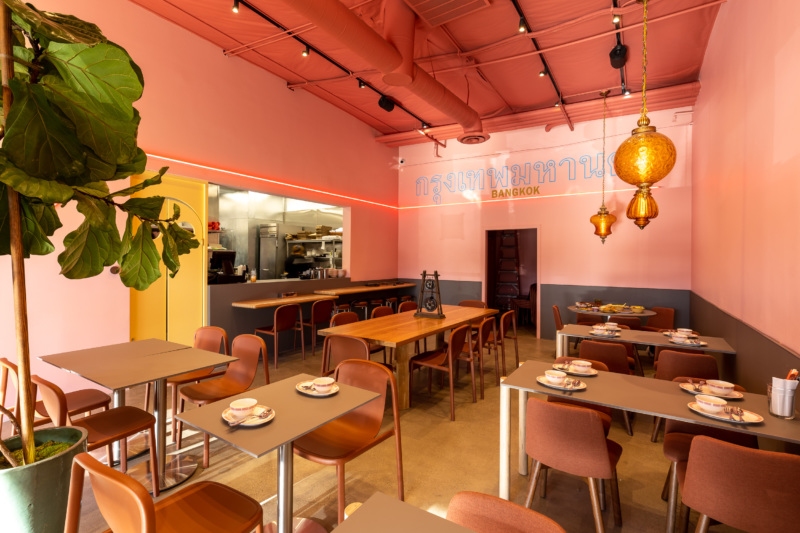
How has your food at the three restaurants changed in general?
Amanda Maneesilasan: The ingredients our parents needed back in the 1970s were not available, so they did their best, but their dishes then were still a bit Americanized. But now, we have everything. We can bring those traditional Thai family dishes back.
You both practically grew up in restaurants. Can you talk about that experience?
Katy Noochlaor: We were born in Bangkok and our parents left us with our grandparents there to pursue schooling in L.A. They opened Chao Krung and then brought us over in 1981 when we were about eight and nine years old.
Amanda Maneesilasan: All our family and extended family were working out in the front of the restaurant, and our cousins — there were six kids, including Katy and I — were in the back of the restaurant. It was like a nursery.
Katy Noochlaor: I remember walking to Chao Krung after school at Fairfax High and going directly to the storage room to do my homework. I would grab food while I was waiting for my parents to close the restaurant.
Amanda Maneesilasan: It was pretty crazy to have all our families work there together.
Katy Noochlaor: But it was fun.
Amanda Maneesilasan: When we were young, we would just look at how much [our family] worked. It was such a busy time, with people lining up out the door. Everyone was just running around. We don’t freak out when we’re slammed now because we’ve been used to that since we were very little.


How did you two end up taking over Chao Krung in 2016?
Amanda Maneesilasan: A year earlier, our parents were giving us hints about how they wanted to retire. Dad asked us to decide what we wanted to do with Chao Krung.
Katy Noochlaor: They don’t just love it; it’s their home, so they’d hate to lose it. We didn’t want to give up this restaurant. Our parents established it almost 50 years ago, and there’s too much history to not take it over.
What are the differences between your three restaurants?
Katy Noochlaor: Same Same is a wine bar with Thai food. Chao Krung is more traditional Thai. And Tuk Tuk is more street food mixed with Thai classics. They’re different enough, though there are similar dishes on each menu — of course, we’re going to have the staples that everybody wants to order, and it works especially well for takeout, so we can’t leave those off the menu. But we do try to make every restaurant unique.
How did you weather the pandemic?
Katy Noochlaor: We got lucky. We were able to pivot to takeout and delivery right away because we were already set up for it. Our customers were so supportive, ordering to support and keep us alive. At that time, people were staying home to cook their own food but because not everyone can cook Thai, that market was open for us. We didn’t make any money even though our sales were stable, but we were able to stay open. We kept all our staff who wanted to stay on. With staff shortages, we were physically working every day. We got through the pandemic as a team and family.
Amanda Maneesilasan: I was so scared about what was going to happen next with everything shut down. Before, we had customers coming in and we could interact with them, but Covid killed all of that. The best way I can communicate with customers now is through my cooking. I’ve been working seven days a week ever since.
How have you managed to keep the restaurants going for so long?
Katy Noochlaor: Being passionate about and committed to what you do takes you a long way. The restaurant business is 24 hours a day, so you have to be on your toes all the time, be able to adapt in changing situations, and resolve problems on the fly. To have a successful business and work with family requires extra communication. During the pandemic, we didn’t give up. We fought to stay open. We did everything we possibly could to make the situation work for us and pivoted when we had to. We know we are strong business people and us getting through the pandemic has made us realize that if we could get through that, we could handle anything.
Jean Trinh’s food and culture stories have appeared in The Washington Post, Los Angeles Times, and Food & Wine. Follow her on Twitter and Instagram. Follow Resy, too.













